All types of computers follow a same basic logical structure and perform the following five basic operations for converting raw input data into information useful to their users
| Sr. No. | Operation | Description |
|---|---|---|
| 1 | Take Input | The process of entering data and instructions into the computer system. |
| 2 | Store Data | Saving data and instructions so that they are available for processing as and when required. |
| 3 | Processing Data | Performing arithmetic, logical operations on data in order to convert them into useful information. |
| 4 | Output Information | The process of producing useful information or results for the user, such as a printed report or visual display. |
| 5 | Control the workflow | Direct the manner and sequence in which all of the above operations are performed. |
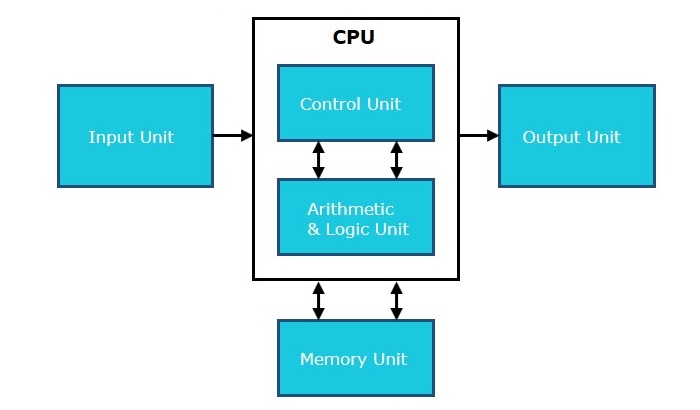
Input Unit
This unit contains devices with the help of which we enter data into computer. This unit makes link between user and computer.
The input devices translate the human being information into the form understandable by computer.
CPU (Central Processing Unit)
CPU is considered as the brain of the computer. CPU performs all types of data processing operations. It stores data, intermediate results and instructions (program). It controls the operations of all parts of computer.
CPU itself has the following three components
- ALU (Arithmetic Logic Unit)
- Memory Unit
- Control Unit
Output Unit
Output unit consists of devices with the help of which we get the information from computer. This unit is a link between computer and users.
Output devices translate the computer's output into the form understandable by users.
- CPU is considered as the brain of the computer.
- CPU performs all types of data processing operations.
- It stores data, intermediate result and instructions (program).
- It controls the operations of all parts of computer.

CPU itself has the following three components.
- Memory or Storage Unit:
- Control Unit
- ALU (Arithmetic Logic Unit)

Memory Or Storage Unit:
This unit can store instructions, data and intermediate results. This unit supplies information to the other units of the computer when needed. It is also known as internal storage unit or main memory or primary storage or Random access memory(RAM).
Its size affects speed, power and capability. There are primary memory and secondary memory, two types of memories in the computer. Functions of Memory Unit are:
- It stores all the data to be processed and the instructions required for processing.
- It stores intermediate results of processing.
- It stores final results of processing before these results are released to an output device.
- All inputs and outputs are transmitted through main memory.
Control Unit
This unit controls the operations of all parts of computer. It does not carry out any actual data processing operations.
Functions of this unit are:
- It is responsible for controlling the transfer of data and instructions among other units of a computer.
- It manages and coordinates all the units of the computer.
- It obtains the instructions from the memory, interprets them and directs the operation of the computer.
- It communicates with Input/Output devices for transfer of data or results from storage.
- It does not process or store data.
ALU (Arithmetic Logic Unit)
This unit consists of two subsections namely:
- Arithmetic Section
- Logic Section
Arithmetic Section
Function of Arithmetic section is to perform arithmetic operations like addition, subtraction, multiplication and division. All complex operations are done by making repetitive use of above operations.
Logic Section
Function of logic section is to perform logic operations such as comparing, selecting, matching and merging of data.
Following are few of the important input devices, which are used in Computer Systems:
- Keyboard
- Mouse
- Joystick
- Light pen
- Track Ball
- Scanner
- Graphic Tablet
- Microphone
- Magnetic Ink Card Reader (MICR)
- Optical Character Reader (OCR)
- Bar Code Reader
- Optical Mark Reader
Keyboard
Most common and very popular input device is keyboard. The keyboard helps in inputting the data to the computer. The layout of the keyboard is like that of traditional typewriter, although there are some additional keys provided for performing some additional functions.
Keyboards are of two sizes 84 keys or 101/102 keys, but now 104 keys or 108 keys keyboard is also available for Windows and Internet.
The keys are following
| Sr. No. | Keys | Description |
|---|---|---|
| 1 | Typing Keys | These keys include the letter keys (A-Z) and digits keys (0-9) which generally give same layout as that of typewriters. |
| 2 | Numeric Keypad | It is used to enter numeric data or cursor movement. Generally, it consists of a set of 17 keys that are laid out in the same configuration used by most adding machine and calculators. |
| 3 | Function Keys | The twelve functions keys are present on the keyboard. These are arranged in a row along the top of the keyboard. Each function key has unique meaning and is used for some specific purpose. |
| 4 | Control keys | These keys provide cursor and screen control. It includes four directional arrow key. Control keys also include Home, End, Insert, Delete, Page Up, Page Down, Control(Ctrl), Alternate(Alt), Escape(Esc). |
| 5 | Special Purpose Keys | Keyboard also contains some special purpose keys such as Enter, Shift, Caps Lock, Num Lock, Space bar, Tab, and Print Screen. |

Mouse
Mouse is most popular Pointing device. It is a very famous cursor-control device. It is a small palm size box with a round ball at its base which senses the movement of mouse and sends corresponding signals to CPU on pressing the buttons.
Generally, it has two buttons called left and right button and scroll bar is present at the mid. Mouse can be used to control the position of cursor on screen, but it cannot be used to enter text into the computer.
Advantages
- Easy to use
- Not very expensive
- Moves the cursor faster than the arrow keys of keyboard.

Joystick
Joystick is also a pointing device, which is used to move cursor position on a monitor screen. It is a stick having a spherical ball at its both lower and upper ends. The lower spherical ball moves in a socket. The joystick can be moved in all four directions.
The function of joystick is similar to that of a mouse. It is mainly used in Computer Aided Designing (CAD) and playing computer games.

Light Pen
Light pen is a pointing device, which is similar to a pen. It is used to select a displayed menu item or draw pictures on the monitor screen. It consists of a photocell and an optical system placed in a small tube.
When light pen's tip is moved over the monitor screen and pen button is pressed, its photocell sensing element, detects the screen location and sends the corresponding signal to the CPU.
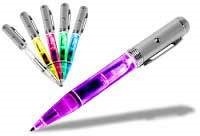
Track Ball
Track ball is an input device that is mostly used in notebook or laptop computer, instead of a mouse. This is a ball, which is half inserted and by moving fingers on ball, pointer can be moved.
Since the whole device is not moved, a track ball requires less space than a mouse. A track ball comes in various shapes like a ball, a button and a square.
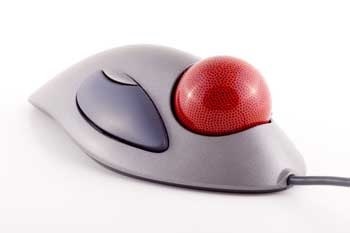
Scanner
Scanner is an input device, which works more like a photocopy machine. It is used when some information is available on a paper and it is to be transferred to the hard disc of the computer for further manipulation.
Scanner captures images from the source which are then converted into the digital form that can be stored on the disc. These images can be edited before they are printed.

Digitizer
Digitizer is an input device, which converts analog information into a digital form. Digitizer can convert a signal from the television camera into a series of numbers that could be stored in a computer. They can be used by the computer to create a picture of whatever the camera had been pointed at.
Digitizer is also known as Tablet or Graphics Tablet because it converts graphics and pictorial data into binary inputs. A graphic tablet as digitizer is used for doing fine works of drawing and images manipulation applications.
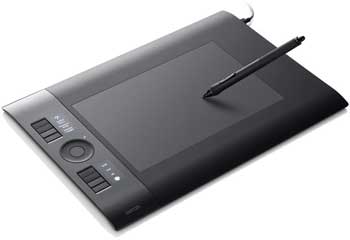
Microphone
Microphone is an input device to input sound that is then stored in digital form. The microphone is used for various applications like adding sound to a multimedia presentation or for mixing music.

Magnetic Ink Card Reader (MICR)
MICR input device is generally used in banks because of a large number of cheques to be processed everyday. The bank's code number and cheque number are printed on the cheques with a special type of ink that contains particles of magnetic material that are machine readable.
This reading process is called Magnetic Ink Character Recognition (MICR). The main advantage of MICR is that it is fast and less error prone.
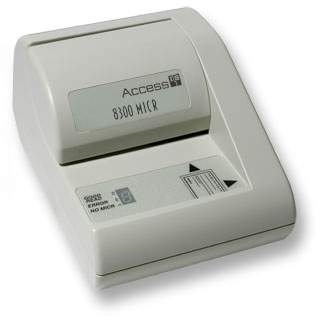
Optical Character Reader (OCR)
OCR is an input device used to read a printed text. OCR scans text optically character by character, converts them into a machine readable code and stores the text on the system memory.
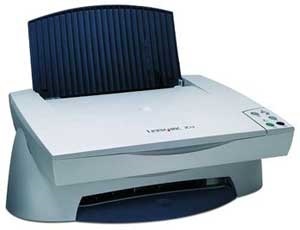
Bar Code Readers
Bar Code Reader is a device used for reading bar coded data (data in form of light and dark lines). Bar coded data is generally used in labelling goods, numbering the books, etc. It may be a hand-held scanner or may be embedded in a stationary scanner.
Bar Code Reader scans a bar code image, converts it into an alphanumeric value, which is then fed to the computer to which bar code reader is connected.
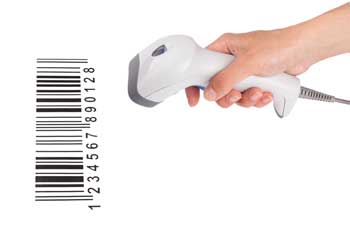
Optical Mark Reader (OMR)
OMR is a special type of optical scanner used to recognize the type of mark made by pen or pencil. It is used where one out of a few alternatives is to be selected and marked. It is specially used for checking the answer sheets of examinations having multiple choice questions.
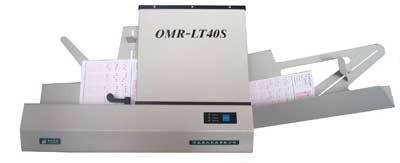
Following are few of the important output devices, which are used in Computer Systems:
- Monitors
- Graphic Plotter
- Printer
Monitors
Monitor commonly called as Visual Display Unit (VDU) is the main output device of a computer. It forms images from tiny dots, called pixels, that are arranged in a rectangular form. The sharpness of the image depends upon the number of the pixels.
There are two kinds of viewing screen used for monitors:
- Cathode-Ray Tube (CRT)
- Flat-Panel Display
Cathode-Ray Tube (CRT) Monitor
In the CRT, display is made up of small picture elements called pixels for short. The smaller the pixels, the better the image clarity or resolution. It takes more than one illuminated pixel to form whole character, such as the letter 'e' in the word help.
A finite number of characters can be displayed on a screen at once. The screen can be divided into a series of character boxes - fixed location on the screen where a standard character can be placed.
Most screens are capable of displaying 80 characters of data horizontally and 25 lines vertically. There are some disadvantages of CRT:
- Large in Size
- High power consumption
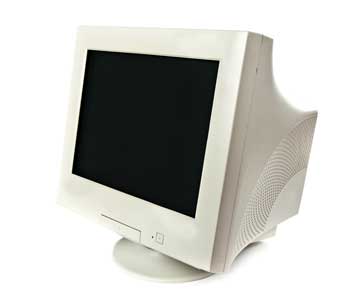
Flat-Panel Display Monitor
The flat-panel display refers to a class of video devices that have reduced volume, weight and power requirement compared to the CRT. You can hang them on walls or wear them on your wrists. Current uses for flat-panel displays include calculators, video games, monitors, laptop computer, graphics display.
The flat-panel display are divided into two categories:
- Emissive Displays - The emissive displays are devices that convert electrical energy into light. Example are plasma panel and LED (Light-Emitting Diodes).
- Non-Emissive Displays - The Non-emissive displays use optical effects to convert sunlight or light from some other source into graphics patterns. Example is LCD (Liquid-Crystal Device)
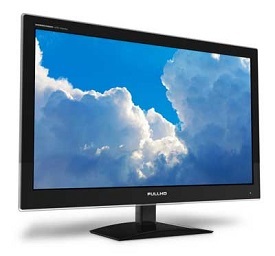
Printers
Printer is the most important output device, which is used to print information on paper.
There are two types of printers:
- Impact Printers
- Non-Impact Printers
Impact Printers
The printers that print the characters by striking against the ribbon and onto the paper, are called impact printers.
Characteristics of Impact Printers are the following:
- Very low consumable costs
- Impact printers are very noisy
- Useful for bulk printing due to low cost
- There is physical contact with the paper to produce an image
These printers are of two types:
- Character printers
- Line printers
Character Printers:
Character Printers are printers, which print one character at a time.
These are of further two types:
- Dot Matrix Printer (DMP)
- Daisy Wheel
Dot Matrix Printer
In the market, one of the most popular printer is Dot Matrix Printer because of their ease of printing features and economical price. Each character printed is in form of pattern of Dot's and head consists of a Matrix of Pins of size(5*7, 7*9, 9*7 or 9*9) which comes out to form a character that is why it is called Dot Matrix Printer.
Advantages
- Inexpensive
- Widely Used
- Other language characters can be printed
Disadvantages
- Slow Speed
- Poor Quality
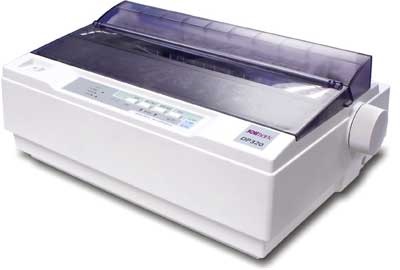
Daisy Wheel
Head is lying on a wheel and Pins corresponding to characters are like petals of Daisy (flower name) that is why it is called Daisy Wheel Printer. These printers are generally used for word-processing in offices which require a few letters to be send here and there with very nice quality representation.
Advantages
- More reliable than DMP's
- Better quality
- The fonts of character can be easily changed.
Disadvantages
- Slower than DMP's
- Noisy
- More expensive than DMP's
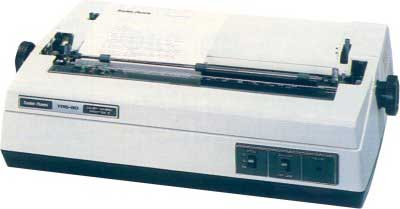
Line Printers
Line printers are printers, which print one line at a time.
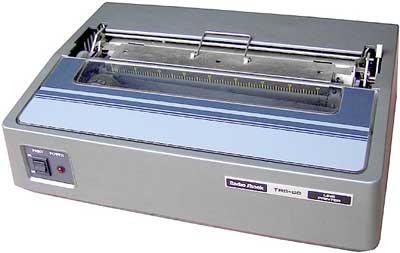
These are of further two types:
- Drum Printer
- Chain Printer
Drum Printer
This printer is like a drum in shape so it called drum printer. The surface of drum is divided into number of tracks. Total tracks are equal to size of paper, i.e., for a paper width of 132 characters, Drum will have 132 tracks. A character set is embossed on track. The different character sets available in market are 48 character set, 64 and 96 characters set. One rotation of drum prints one line. Drum Printers are fast in speed and prints between 300 to 2000 lines per minute.
Advantages
- Very high speed
Disadvantages
- Very expensive
- Characters fonts can not be changed
Chain Printer
In this printer, chain of character sets are used so it called Chain Printers. A standard character set may have 48, 64, 96 characters.
Advantages
- Character fonts can easily be changed.
- Different languages can be used with the same printer.
Disadvantages
- Noisy
- Do not have the ability to print any shape of characters.
Non-impact Printers
The printers that print the characters without striking against the ribbon and onto the paper are called Non-impact Printers. These printers print a complete page at a time, also called as Page Printers.
These printers are of two types:
- Laser Printers
- Inkjet Printers
Characteristics of Non-impact Printers:
- Faster than impact printers.
- They are not noisy.
- High quality.
- Support many fonts and different character size.
Laser Printers
These are non-impact page printers. They use laser lights to produce the dots needed to form the characters to be printed on a page.
Advantages
- Very high speed.
- Very high quality output.
- Gives good graphics quality.
- Supports many fonts and different character sizes.
Disadvantage
- Expensive.
- Cannot be used to produce multiple copies of a document in a single printing.
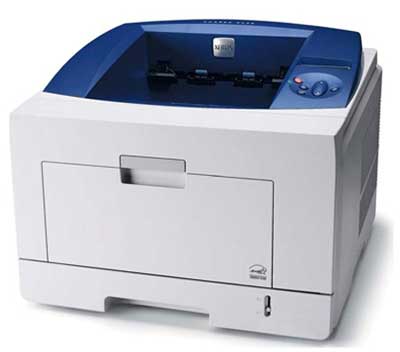
Inkjet Printers
Inkjet printers are non-impact character printers based on a relatively new technology. They print characters by spraying small drops of ink onto paper. Inkjet printers produce high quality output with presentable features.
They make less noise because no hammering is done and these have many styles of printing modes available. Colour printing is also possible. Some models of Inkjet printers can produce multiple copies of printing also.
Advantages
- High quality printing
- More reliable
Disadvantages
- Expensive as cost per page is high
- Slow as compared to laser printer
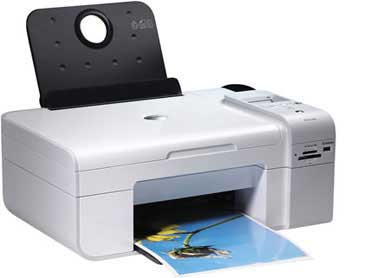
No comments:
Post a Comment